The Gaboon Viper doesn’t just bite—it breaks records.
Longest fangs of any snake. One of the highest venom yields on the planet. A strike so fast, you’ll swear you imagined it—until the pain kicks in.
This isn’t a snake you stumble across and forget.
It’s the kind that vanishes into leaf litter, then reminds you why respect for nature isn’t optional.
If you’re anywhere near its turf—from African rainforests to dusty savannas—you need more than curiosity. You need knowledge. Because getting bit by a Gaboon Viper isn’t just scary—it’s a race against time.
Here are 14 things you’ll wish you knew before that bite.
Read them now. Thank yourself later.
Camouflage Mastery
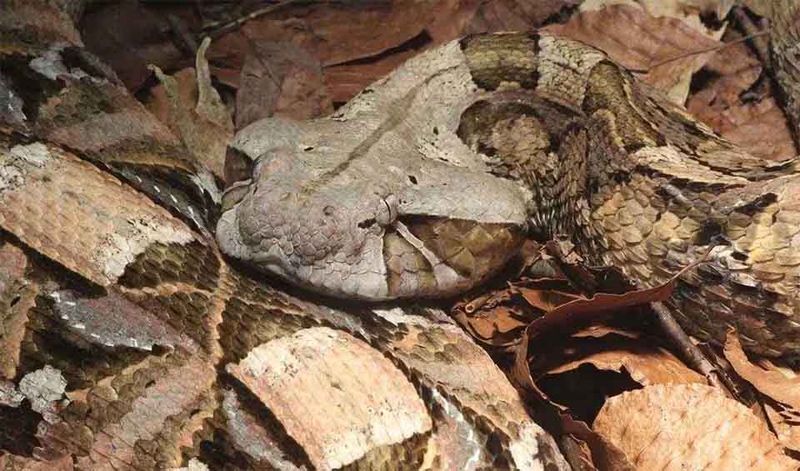
The Gaboon Viper is nature’s camouflage expert, boasting a pattern that mimics the leaf litter of forest floors. This remarkable disguise is vital for both predation and avoiding threats.
Imagine walking through the African jungle, unaware that this massive snake lies just inches away, invisible to the casual observer. Their ability to remain undetected is both awe-inspiring and terrifying.
Encountering a Gaboon Viper can be a surreal experience, as their mottled skin blends perfectly into their surroundings. Their stealth is a reminder of nature’s wonders and the importance of being vigilant in their habitats.
Venom Potency
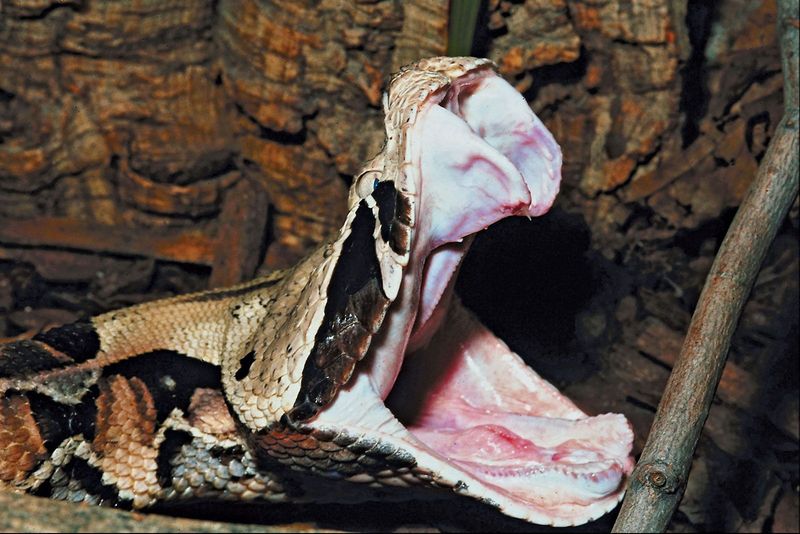
The venom of a Gaboon Viper is highly potent, capable of incapacitating its prey swiftly. This venom contains enzymes that break down tissue, leading to rapid immobilization.
Imagine the sudden, sharp pain of a bite, followed by an intense burning sensation that spreads quickly. The venom’s complexity is a marvel of evolution, designed to ensure successful hunting.
For humans, understanding the venom’s effects is crucial for timely medical intervention. In regions where these vipers are found, medical facilities must be prepared to handle such emergencies with precision.
Fang Length
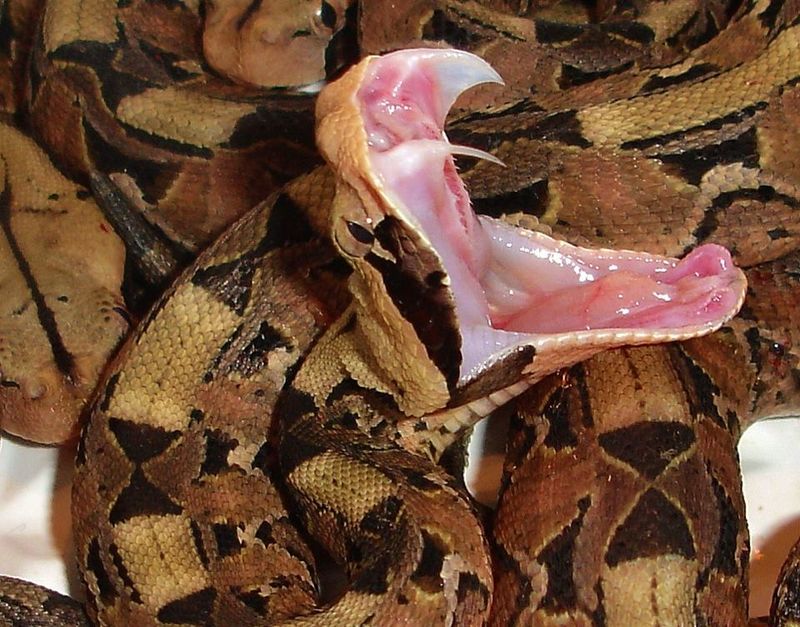
Gaboon Vipers possess the longest fangs of any snake, reaching up to two inches in length. These formidable tools allow the snake to deliver deep venomous bites.
Picture encountering this serpent, its massive fangs hidden beneath its scales, ready to strike at a moment’s notice. The sheer size of these fangs aids in subduing larger prey and poses a significant threat to humans.
Being aware of their presence is vital for avoiding accidental encounters. Understanding their anatomy provides insights into their hunting prowess and the risks they pose.
Behavioral Patterns

Gaboon Vipers are generally sluggish and non-aggressive, preferring to remain still and rely on their camouflage. Yet, they can strike with incredible speed if threatened.
Imagine the serene quiet of the forest, suddenly broken by the lightning-fast strike of a viper. These snakes often remain motionless for hours, awaiting an unsuspecting target.
Understanding their behavior is essential for anyone venturing into their territory. Their defensive strategies, while effective, highlight the delicate balance between predator and prey.
Antivenom Availability
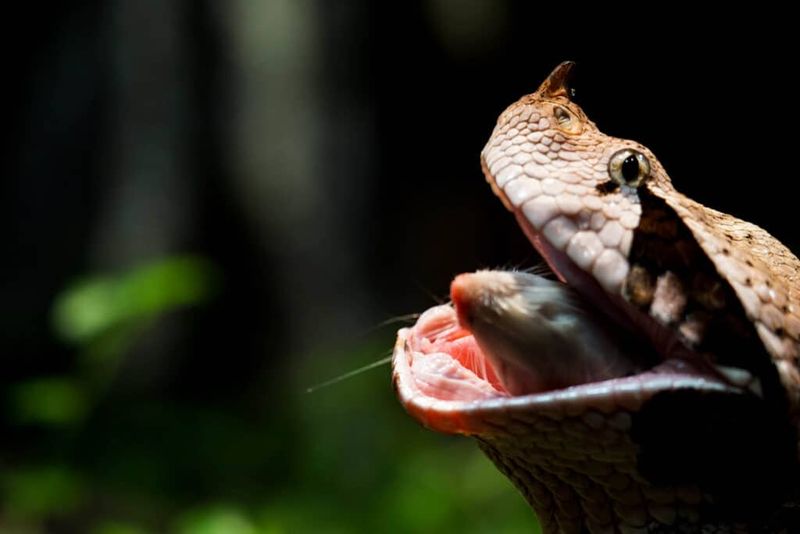
Access to antivenom is critical in regions where Gaboon Vipers are common. This life-saving treatment can mitigate the severe effects of a bite, making medical preparedness paramount.
Imagine a rural clinic, equipped with the necessary antivenom, becoming a beacon of hope for snakebite victims. Healthcare providers must be trained in administering this treatment promptly and effectively.
The availability of antivenom can mean the difference between life and death, underscoring the need for adequate medical infrastructure in affected areas.
Habitat Preference
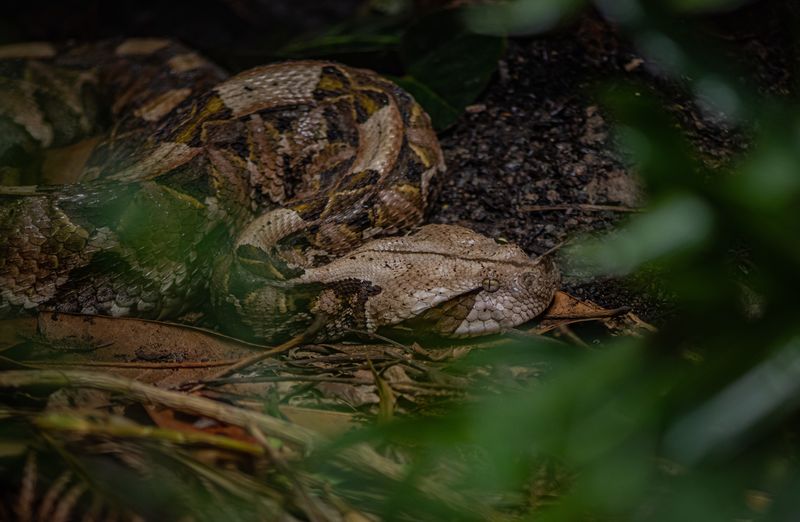
Gaboon Vipers thrive in rainforests and savannas, preferring humid environments with ample cover. These habitats offer the perfect blend of moisture and shelter.
Imagine the dense foliage of a rainforest, where the air is thick with humidity, providing ideal conditions for these snakes. Their presence in such environments is a testament to their adaptability and survival instincts.
Understanding their habitat preferences aids in conservation efforts and helps mitigate human-snake conflicts. The beauty of their surroundings is as captivating as the vipers themselves.
Conservation Status
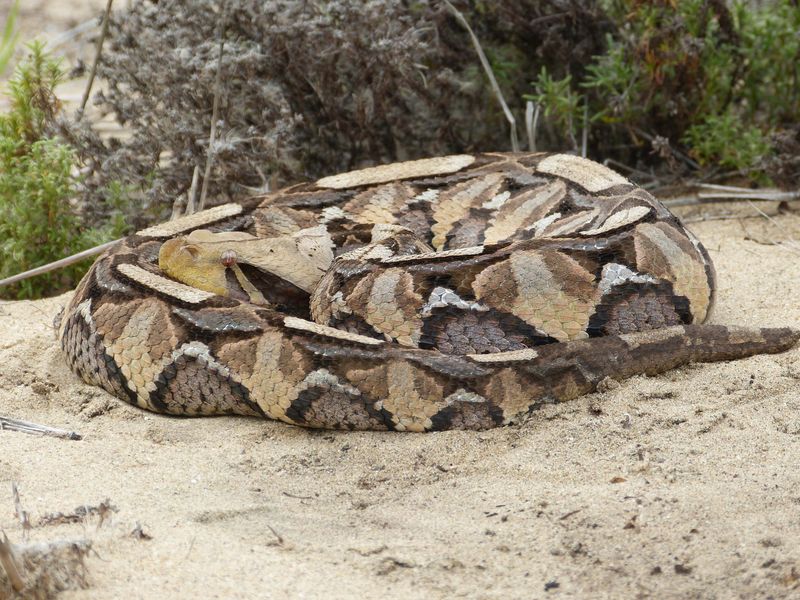
The conservation status of Gaboon Vipers varies across their range, with habitat destruction posing a significant threat. These snakes play a crucial role in their ecosystems, controlling rodent populations.
Picture the intricate balance of nature, disrupted by human encroachment on their habitats. Efforts to preserve these vipers involve protecting their environments and raising awareness about their ecological importance.
Conservation strategies must prioritize habitat preservation to ensure their survival. The plight of the Gaboon Viper is a reflection of broader environmental challenges.
Diet and Hunting
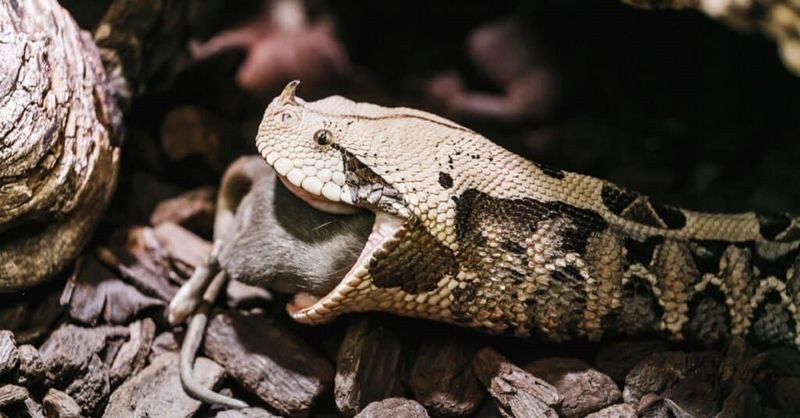
Gaboon Vipers are ambush predators, relying on their camouflage to surprise prey. Their diet primarily consists of small to medium-sized mammals and birds.
Visualize the silent stillness of the forest, broken by the sudden strike of a viper seizing its meal. Their hunting technique is a masterclass in patience and precision, essential traits for survival in the wild.
Understanding their dietary habits sheds light on their role in maintaining ecological balance. The viper’s stealthy approach ensures efficient energy use and successful predation.
Unique Markings
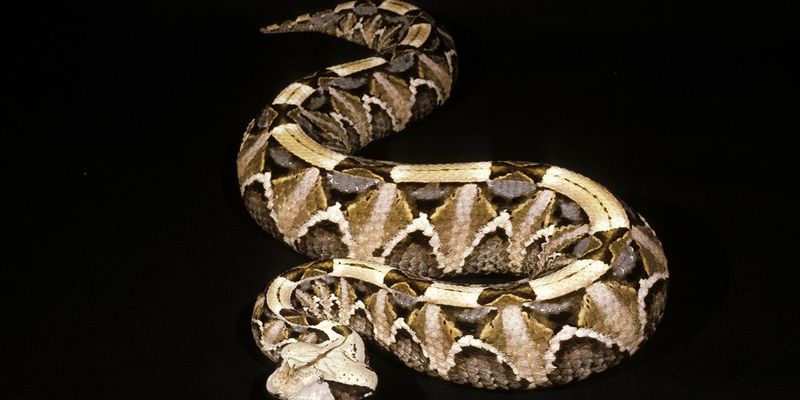
The Gaboon Viper’s unique markings are not just for show; they serve as effective camouflage. Each snake has a distinctive pattern, resembling fallen leaves.
Imagine stumbling upon such a creature, its markings blending seamlessly with the forest floor. These patterns are a testament to evolutionary adaptation, allowing vipers to evade predators and surprise prey.
The beauty of their markings is a reminder of the complexity and creativity found in nature. Observing these patterns up close reveals the artistry of the natural world.
Reproduction and Lifespan
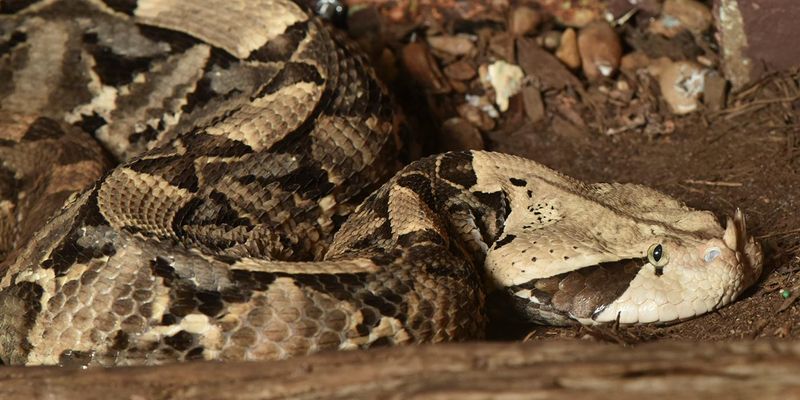
Female Gaboon Vipers give birth to live young, a unique trait among many snake species. This reproductive strategy increases the survival rate of their offspring.
Picture a female viper, nestled in the underbrush, surrounded by her newborns. The lifespan of a Gaboon Viper can reach up to 20 years in the wild, depending on environmental conditions and threats.
Understanding their reproductive habits and life expectancy is crucial for conservation efforts. These aspects reveal the challenges and triumphs of their existence in the wild.
Cultural Significance
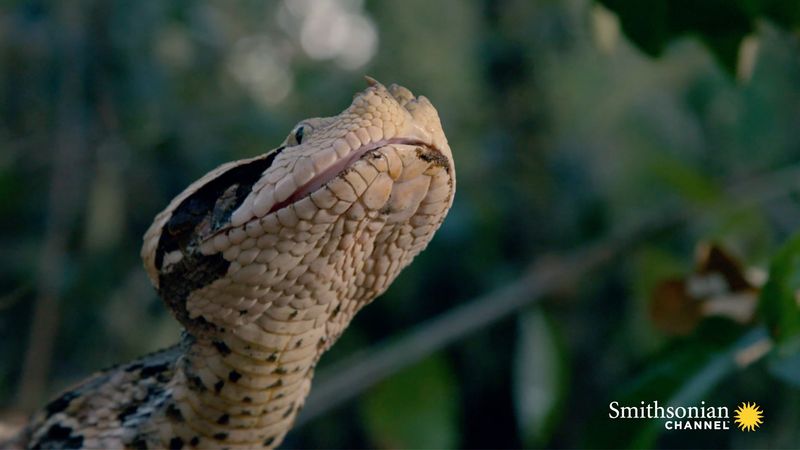
In some African cultures, the Gaboon Viper holds symbolic meaning, representing both danger and protection. Its fearsome reputation is intertwined with local folklore.
Imagine a tribal mask, artfully crafted to mimic the viper’s distinctive markings. These cultural associations highlight the snake’s impact on human communities.
Understanding these connections enriches our appreciation of the viper’s role beyond its ecological significance. The Gaboon Viper’s presence in cultural narratives underscores its influence on the human imagination.
Snakebite Symptoms
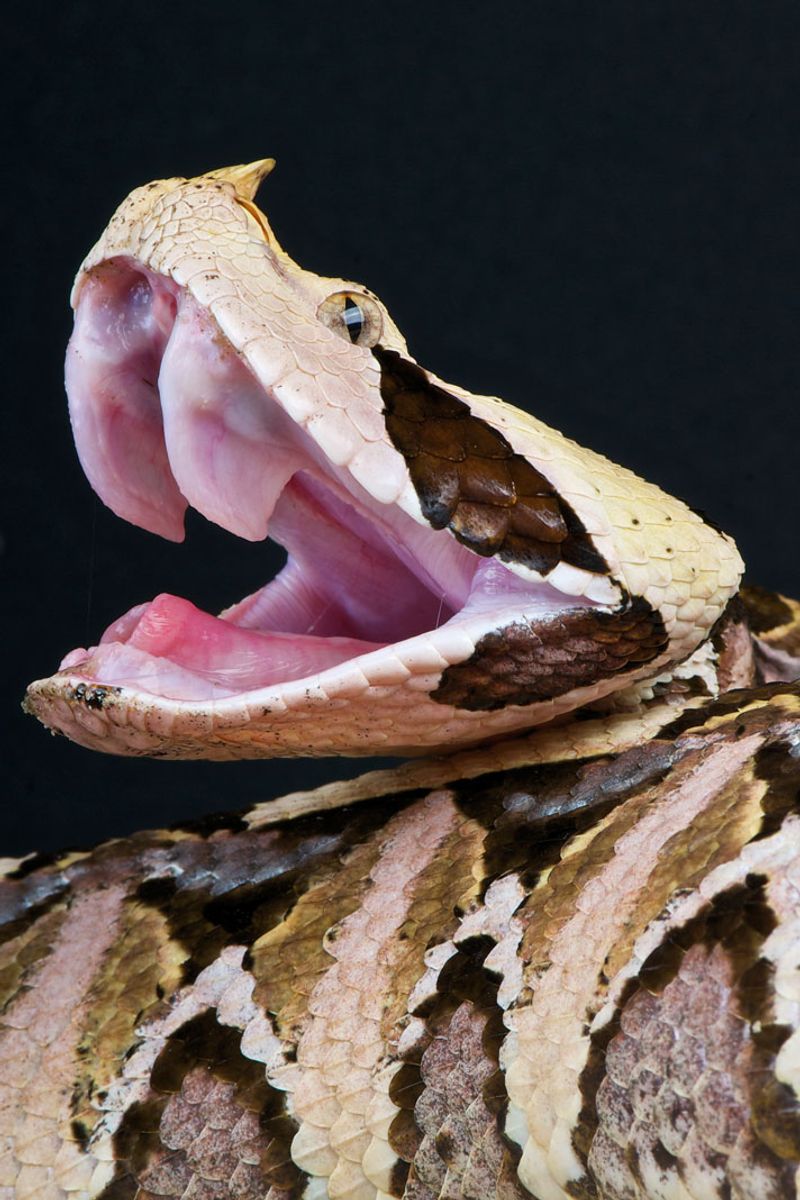
A bite from a Gaboon Viper can cause severe symptoms, including swelling, pain, and tissue damage. The initial bite is often painless, lulling victims into a false sense of security.
Imagine the shock of the symptoms suddenly intensifying, requiring immediate medical attention. Understanding these symptoms is crucial for recognizing and responding to a bite promptly.
Effective treatment can prevent long-term complications and save lives. The severity of the symptoms reflects the viper’s evolved hunting strategy, designed to incapacitate prey swiftly.
Survival Strategies
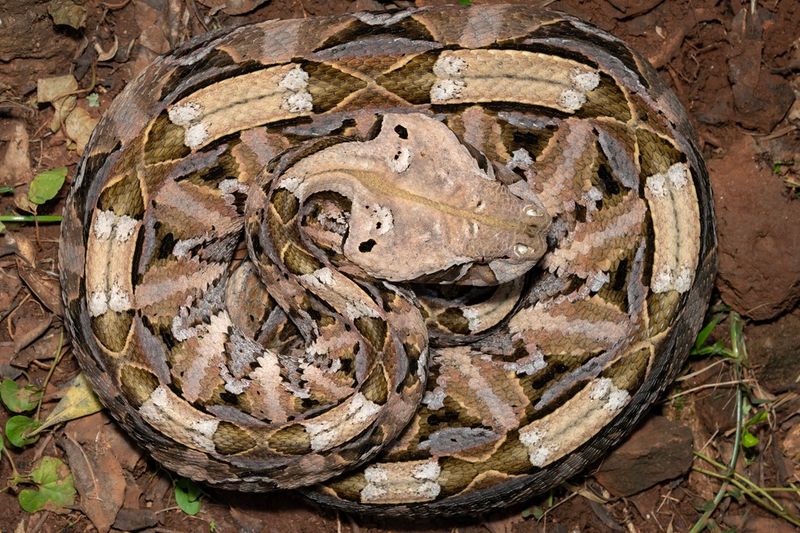
Survival in the wild requires adaptation, and the Gaboon Viper is a master of this art. Its strategies include camouflage, venom potency, and ambush hunting.
Picture the silent forest, where the viper’s presence is only revealed by its sudden movement. These strategies ensure its survival in diverse and challenging environments.
The viper’s ability to adapt showcases the resilience and ingenuity of nature. Understanding these tactics provides insight into the dynamic interplay between predator and environment.
Medical Preparedness

Medical preparedness is vital in regions where Gaboon Vipers are prevalent. Clinics must be equipped to handle snakebites efficiently, with trained personnel and appropriate resources.
Picture a doctor meticulously preparing to treat a bite, aware of the urgent need for precision. Proactive measures, such as community education and accessible resources, can mitigate the impact of snakebites.
Preparedness ensures that the dangers posed by these vipers are managed effectively, reducing potential fatalities. The importance of readiness cannot be overstated in the fight against nature’s challenges.

